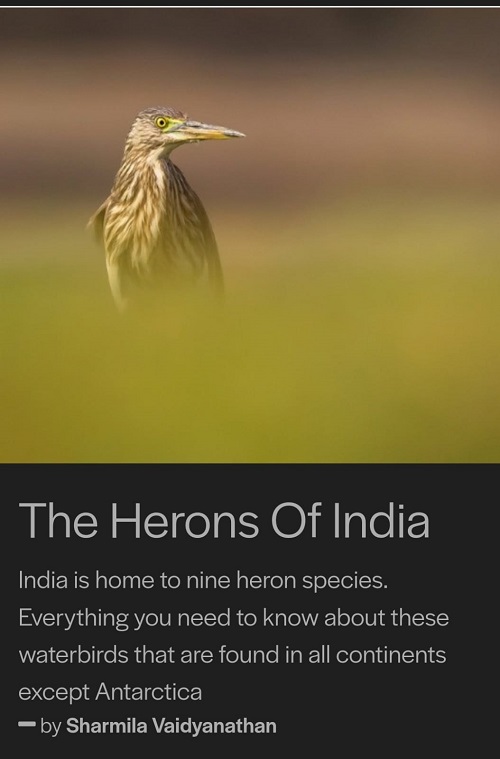India is home to nine heron species. Everything you need to know about these waterbirds that are found in all continents except Antarctica.
As published in Nature inFocus on December 23, 2021.
While photographing wetlands, if you ever find yourself looking at a bird that appears to be studying the water with intense focus, you may have just spotted a member of the heron family. These medium and large-sized birds, characterised by their long neck and legs, are widespread and are found in all continents except for Antarctica. India is home to nine heron species, many of which are found across the country. While most of the heron species in India are designated as Least Concern from a conservation point of view, degradation of wetlands and pollution of water bodies are threats that impact local populations. The fact that heron populations and threats to them are not well-studied further confounds conservation of the species.
In 2020, Nature Conservation Foundation conducted the first-ever survey of the critically endangered White-bellied Herons across 81 sites in northeast India. The study found that various anthropogenic activities like sand/gravel mining, hydropower projects and garbage dumping impacted the sighting of the bird in specific regions. More importantly, the study highlighted that protection of herons needs more focused research and greater awareness among the public. This revelation comes to us at a time when we have lost a significant percentage of wetlands. According to the Wetland International South Asia, India has lost a third of its wetlands to pollution, developmental and agricultural activities in the last four decades. Herons are among the many birds that depend on these water bodies, which makes it imperative that we look at the species in isolation to devise better conservation practices suited to them.
In this story, we share some basic details and images of the herons of India. We hope that this encourages conversations and helps build awareness about their habitats and threats.
Read the complete story here. –> The Herons Of India
